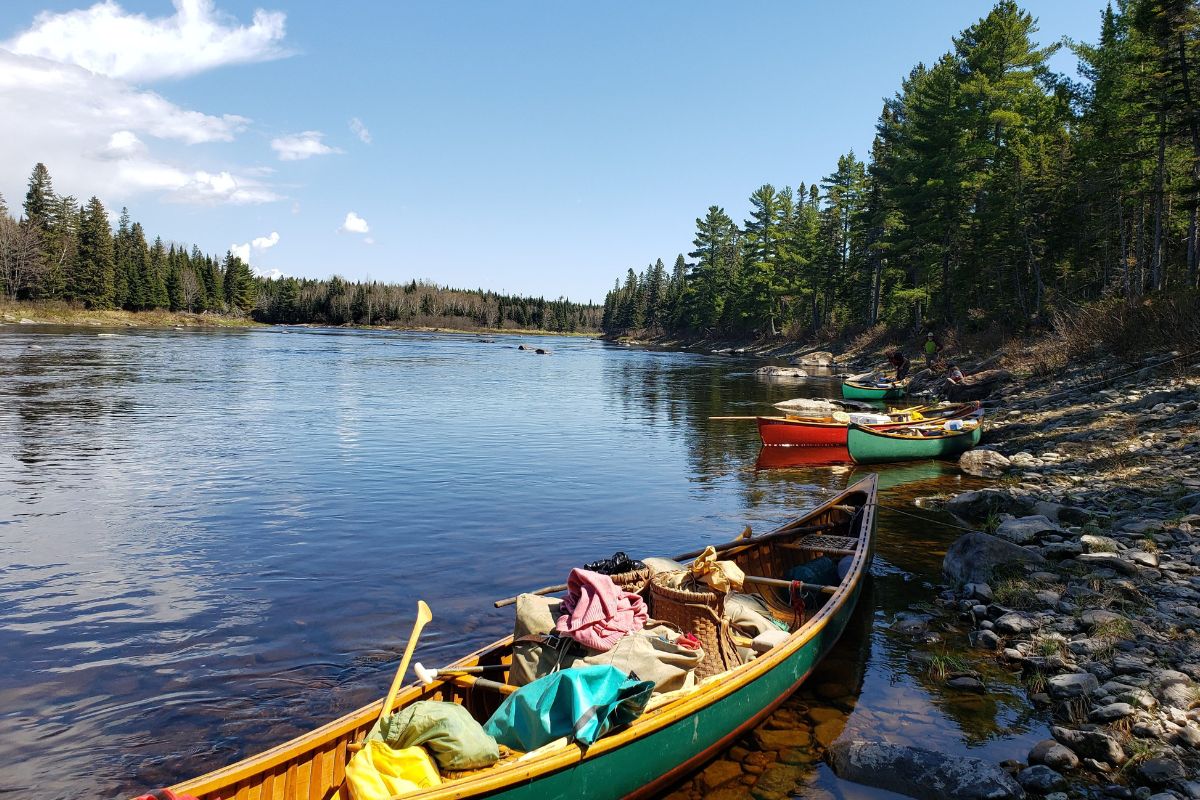Secrets Of Maine’s St. John River Logging Camps

Have you ever wondered what life was like in the St. John River Logging Camps of Maine? These camps were bustling hubs of activity, filled with hardworking loggers who braved harsh conditions to harvest timber. Imagine waking up to the sound of axes and saws, the smell of fresh pine filling the air. The loggers lived in simple cabins, sharing stories by the fire after a long day’s work. Meals were hearty, often consisting of beans, bread, and meat to fuel their grueling labor. Despite the tough lifestyle, a strong sense of camaraderie and resilience thrived among these men. Join us as we delve into the fascinating history and daily life of these historic logging camps.
Discovering the Hidden Gems of Maine's St. John River Logging Camps
Maine's St. John River logging camps hold a treasure chest of history, culture, and natural beauty. These camps, once bustling with loggers, now offer a glimpse into the past and a chance to connect with nature. Let's explore some of the most fascinating spots along the St. John River.
1. Churchill Depot
Churchill Depot stands as a testament to the logging era. This historic site once served as a major hub for loggers. Today, visitors can wander through the remnants of the depot, imagining the hustle and bustle of days gone by.
2. Eagle Lake
Eagle Lake offers a serene escape with its crystal-clear waters and lush surroundings. Once a key location for log drives, it now provides a perfect spot for fishing, kayaking, or simply soaking in the beauty of nature.
3. Allagash Wilderness Waterway
The Allagash Wilderness Waterway stretches over 92 miles, offering a pristine environment for outdoor enthusiasts. Canoeing through this waterway, you can almost hear the echoes of loggers' songs and the creak of timber.
4. Umsaskis Lake
Umsaskis Lake, with its tranquil waters and abundant wildlife, was a crucial stop for loggers. Today, it's a haven for birdwatchers and nature lovers, offering a peaceful retreat from the modern world.
5. Long Lake
Long Lake's picturesque setting makes it a favorite among visitors. Historically, it played a significant role in the logging industry. Now, it's perfect for boating, swimming, or enjoying a picnic by the shore.
6. Round Pond
Round Pond, surrounded by dense forests, was once a bustling logging camp. The pond's calm waters and scenic views make it an ideal spot for reflection and relaxation.
7. Musquacook Stream
Musquacook Stream meanders through the wilderness, offering a glimpse into the rugged life of early loggers. Its clear waters and surrounding forests are perfect for hiking and exploring.
8. St. Francis River
The St. Francis River, with its swift currents and scenic beauty, was a vital route for log drives. Today, it's a popular spot for fishing and canoeing, providing a connection to the river's storied past.
9. Big Black River
Big Black River's remote location made it a challenging yet essential part of the logging network. Adventurers can paddle through its waters, experiencing the same wild beauty that loggers once did.
10. Fish River
Fish River, known for its abundant fish and scenic views, played a key role in the logging industry. Now, it's a favorite among anglers and nature enthusiasts, offering a peaceful escape.
11. Baker Lake
Baker Lake, with its serene waters and surrounding wilderness, was a crucial stop for loggers. Today, it's a perfect spot for camping, fishing, and enjoying the tranquility of nature.
12. Deboullie Mountain
Deboullie Mountain offers stunning views and a rich history. Once a lookout point for loggers, it now provides hiking trails and breathtaking vistas, connecting visitors to the past and present.
13. Seven Islands
Seven Islands, a group of small islands in the St. John River, were once bustling with logging activity. Today, they offer a unique opportunity for exploration and a glimpse into the river's history.
14. Glazier Lake
Glazier Lake's remote beauty made it a favorite among loggers. Its clear waters and surrounding forests provide a perfect setting for fishing, kayaking, and enjoying the great outdoors.
15. Big Eagle Lake
Big Eagle Lake, with its expansive waters and rich history, was a key location for log drives. Now, it's a popular spot for boating, fishing, and soaking in the natural beauty of Maine.
The Legacy of St. John River Logging Camps
St. John River logging camps offer a unique glimpse into Maine's rich history. These camps were more than just places for work; they were communities where loggers lived, shared stories, and built a culture. Visiting these sites today, you can almost hear the echoes of axes and the camaraderie among workers. The camps played a crucial role in the development of the region, contributing to the local economy and shaping the landscape. Exploring these historic sites provides a deeper appreciation for the hard work and resilience of those who came before us. Whether you're a history buff or just curious, the St. John River logging camps are worth a visit. They remind us of the importance of preserving our past while looking toward the future.

